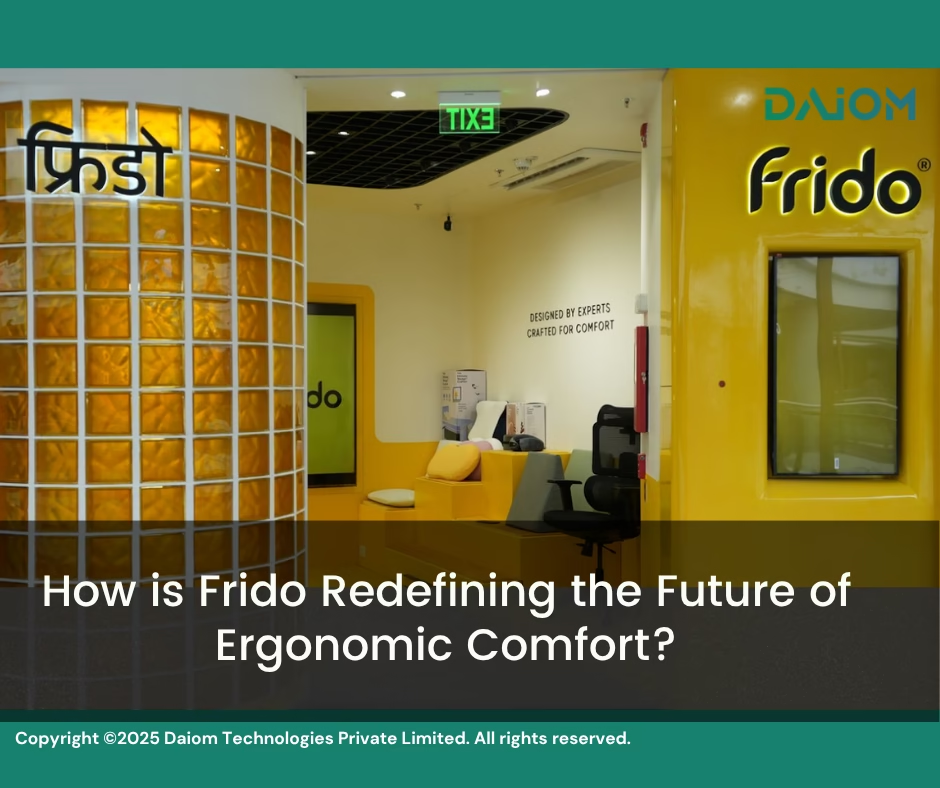Among all the home wellness and D2C brands I’ve discovered, Frido genuinely stands out. I first came across them during one of my endless Instagram scrolls, their famous socks and cushion covers instantly caught my attention.
Later, one of the founders suggested their wedge pillow for my mom and for long flights, it turned out to be a total game changer. The comfort it adds on those hard seats is unreal.
What makes Frido special is how they’ve built a brand around real problems and thoughtful solutions. Their mix of smart product design, authentic storytelling, and sharp marketing makes them stand out in a crowded space.
From starting with just ₹5 lakh to now scaling toward ₹200 crore, their journey is a masterclass in doing the fundamentals right — focusing on differentiated products, building trust through content, and leveraging tech and assisted sales to grow. Frido isn’t just selling comfort — they’re redefining it.
For any brand aiming to grow with a clear and differentiated positioning, Frido’s rise offers powerful lessons. Read on to explore the pillars of their growth story.
I started the company behind Frido with ₹5 lakh, kept showing traction and raising on the go, and it turned out pretty well!
Ganesh Sonawane
Table of Contents:
1. A Gift For My Mother – An Experience With Frido
Recommended by one of the founders, I gifted Frido’s wedge pillow to my mother when she was suffering from back pain. She was deeply relieved and very happy. The pillow’s design (size, firmness, shape) helped relieve her lower back ache after long hours sitting.
It’s honestly one of the most comfortable travel essentials, perfect support, no back strain, and way better than the regular travel pillows. Sometimes, the best products are the ones built with real comfort in mind.
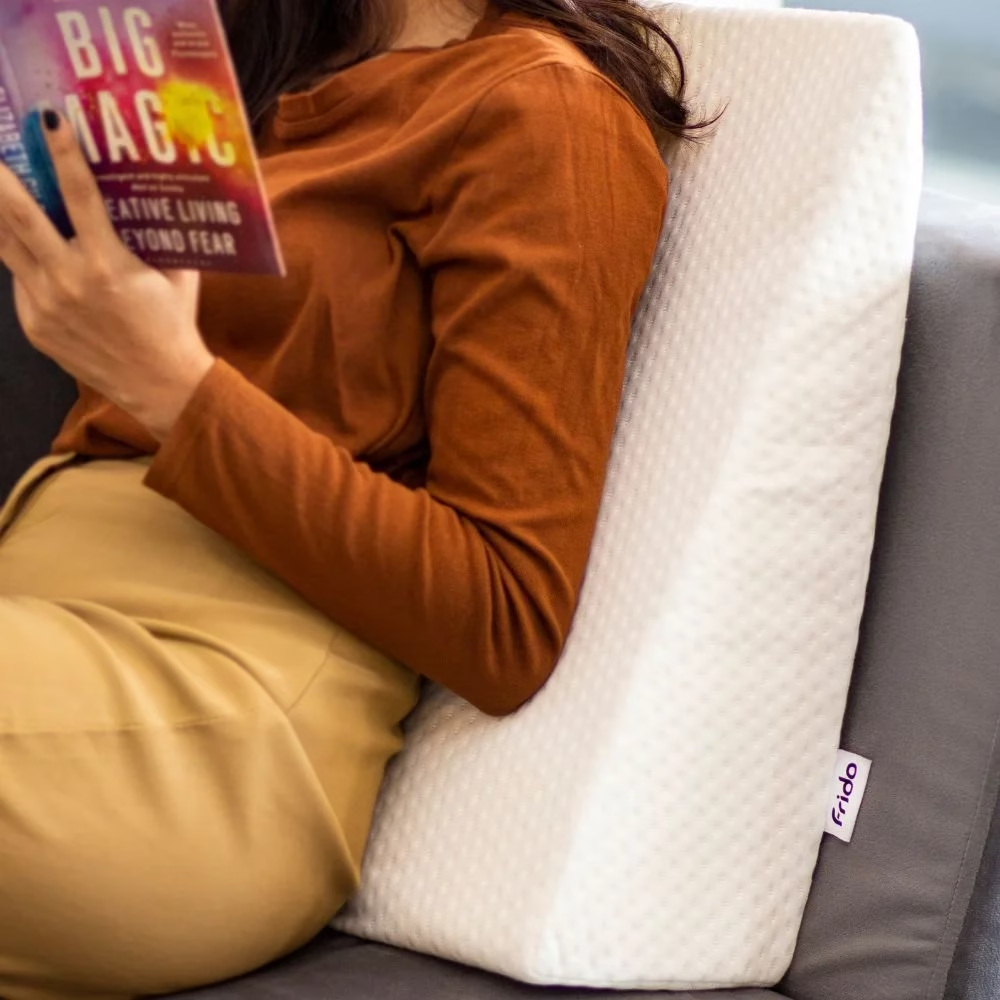
She appreciated how it felt supportive, yet not too stiff, and the materials felt quality. The whole process of purchase: checking features, seeing reviews, understanding feel from the product description, and then eventual use made her feel the purchase was worth it. It wasn’t just about comfort—it felt like getting something that truly helped.
This personal experience made me admire Frido more—not just their product, but their understanding of what comfort means, and how design + marketing + product promise align with real effect.
2. History of Frido
Frido began with empathy and a mission to solve real problems. The story goes back to co-founder Ganesh Sonawane, who, while working at Arcatron Mobility, was designing a wheelchair for a Paralympic athlete. That experience sparked a bigger question: how can we help people with mobility, comfort, and pain relief in everyday life?
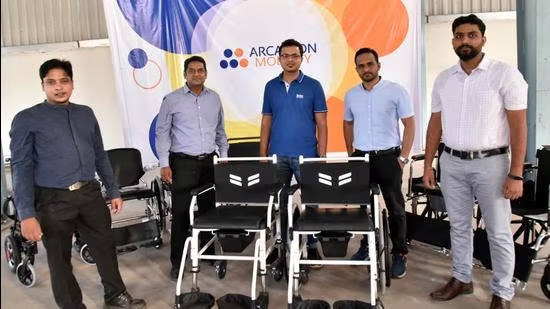
The answer became Frido Go—a groundbreaking wheelchair designed not just for mobility, but for independence. It was the world’s first self-propelled shower and commode wheelchair, foldable enough to fit into a suitcase and capable of navigating tight spaces.
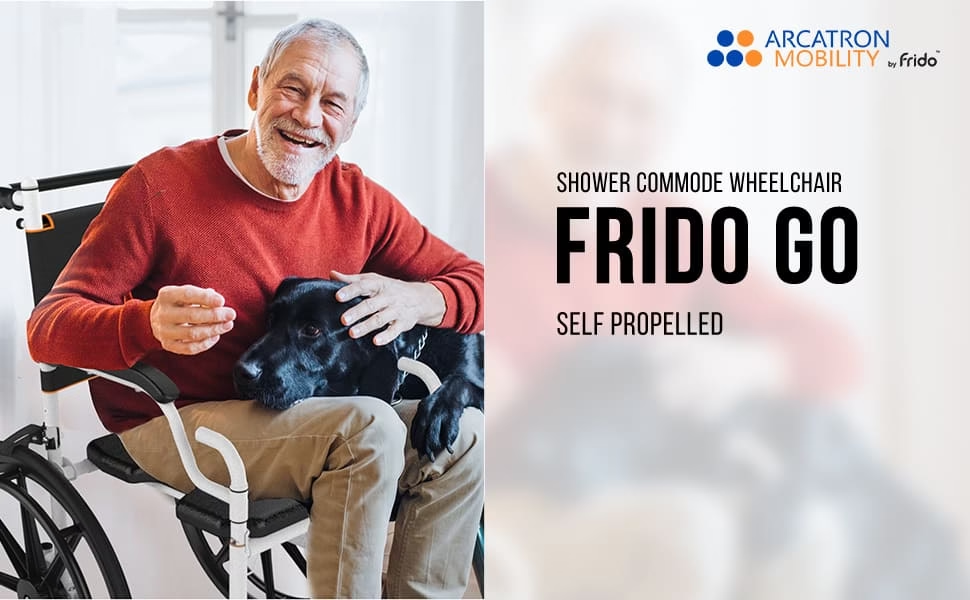
From there, Frido’s vision expanded. The team realized that daily discomfort—back pain, posture issues, foot fatigue—was a universal struggle. So, they began creating ergonomic, research-backed products that empower people to walk, sit, and sleep better. With an initial investment of just ₹5 lakh, they grew steadily, scaling monthly insole sales from about ₹35 lakh to nearly ₹4 crore, and pushing annual revenues towards the ₹200 crore mark.
Today, Frido is not only a digital-first D2C powerhouse but also expanding offline with a new manufacturing facility in Talegaon, Pune, and a flagship experiential store in Pune offering foot scanning, gait analysis, and podiatrist consultations.
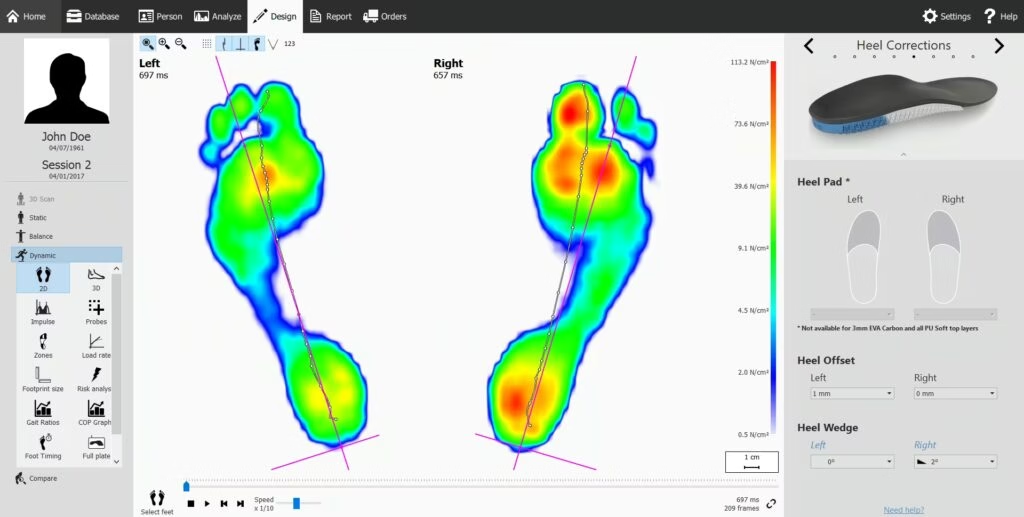
Each product—whether insoles, cushions, pillows, or ergonomic footwear—is built with the same passion as their very first innovation: restoring dignity, comfort, and freedom to people’s everyday lives.
3. How Frido Became a Growth Pioneer?
I recently tried Frido’s products and was genuinely impressed by how the brand is pushing boundaries in ergonomic comfort.
Here are the five things that make Frido excel in the industry—
3.1. Content Strategy That Connects
Frido doesn’t just showcase products, they solve real problems and tell stories that matter. Their campaigns kick off with relatable pain-points and then offer real solutions, whether it’s videos, social posts, or even user-generated content.
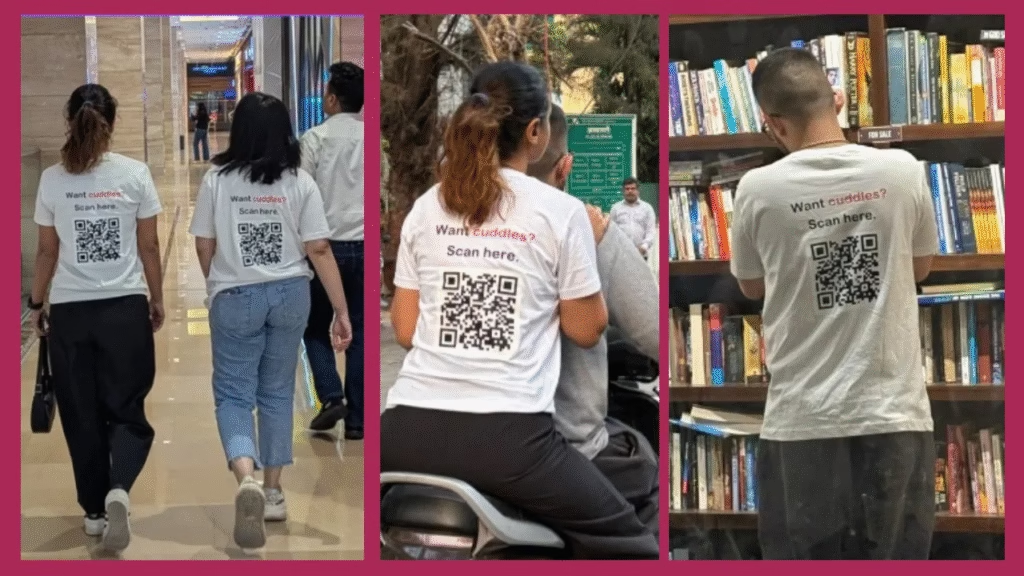
For example, their “Want Cuddles? Scan Here” campaign used QR codes to make people curious, scan, and engage with their new Cuddle Sleep Pillow launch. I found myself drawn in by content that wasn’t pushy, but educational and genuinely helpful.
3.2. Distribution & Omnichannel Reach
Frido has built a strong D2C backbone, with nearly 70% of its revenue coming directly from its own website.
Apart from this, they also leverage marketplaces like Amazon and Flipkart, as well as quick commerce platforms such as Blinkit, Zepto, and Swiggy Instamart, to extend reach and convenience.
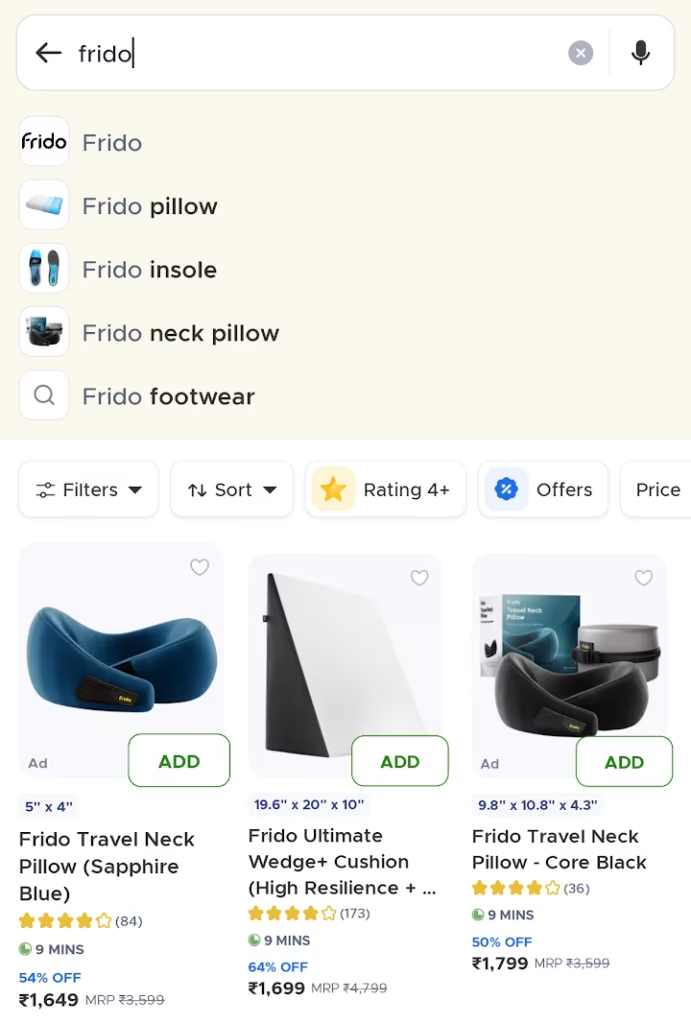
To strengthen offline presence, Frido is rapidly expanding with over 1,000 retail outlets and an experiential store in Pune that offers podiatrist consultations, foot scanning, and more.
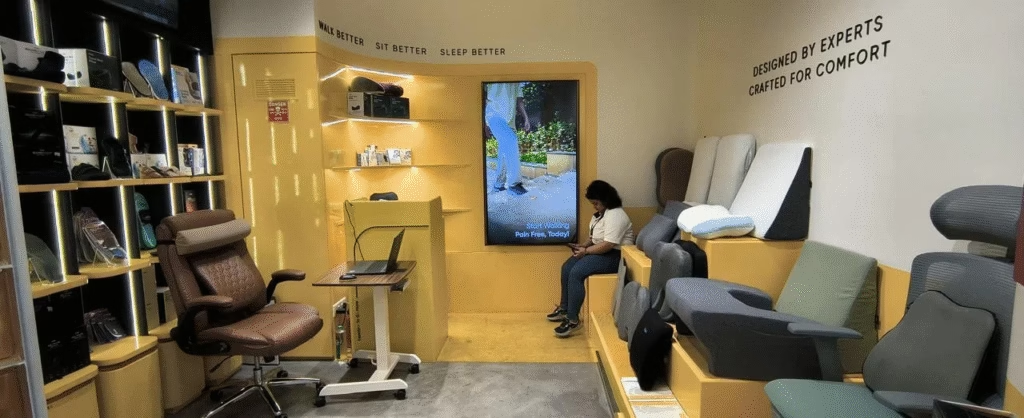
3.3. Unique Product Innovation & Focused Portfolio
Frido, as a brand, doesn’t try to offer everything. Instead, they maintain 5-6 strong products with high value propositions (e.g. insoles, ergonomic cushions, neck/back supports, wedge & body pillows).
“They don’t have thousands of products but a few well crafted ones”
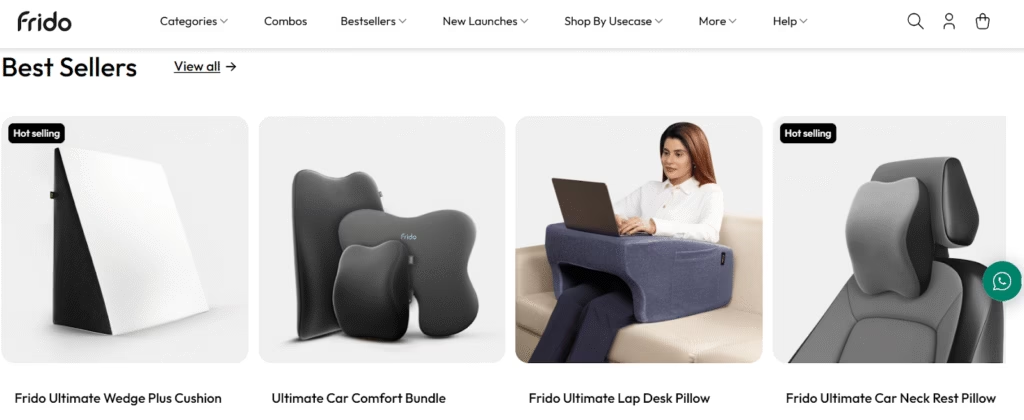
Their innovation comes from solving real problems: neck pain, back pain, poor posture, mobility, etc. Moreover, their products are research-informed, ergonomically designed.
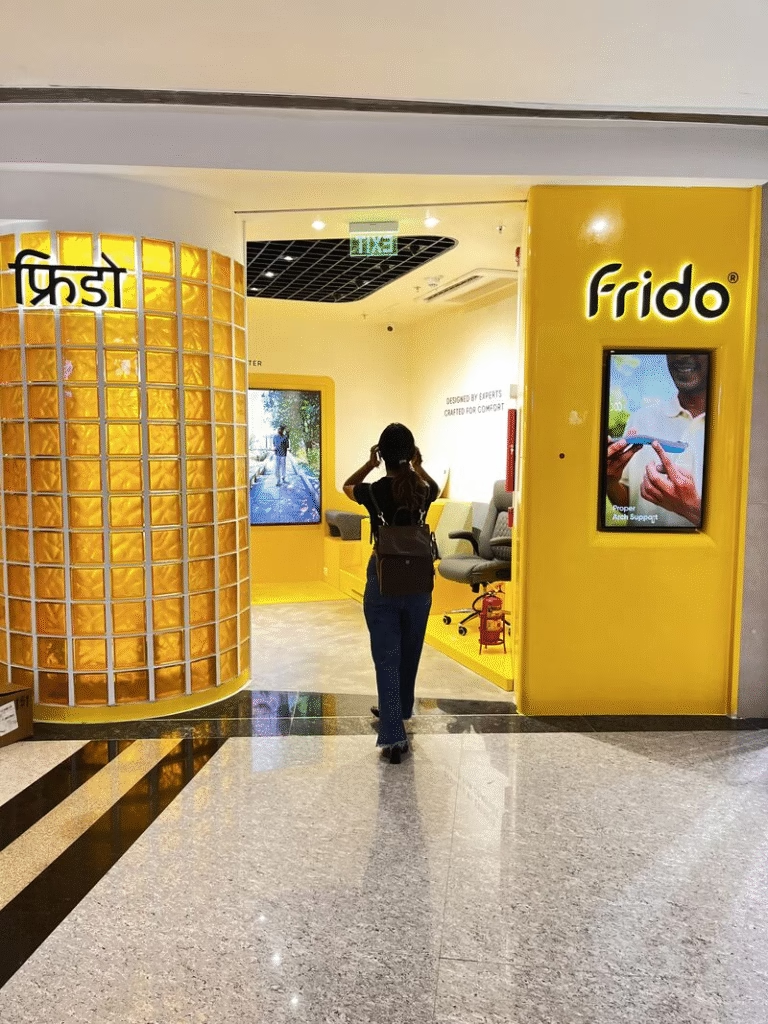
Frido constantly experiments by introducing small yet thoughtful accessories—like socks and other add-ons—that not only widen customer touchpoints but also strengthen their overall product ecosystem.
3.4. Storytelling and Assisted Interaction (Bot/Follow-ups)
It’s easy to see the care in Frido’s customer funnel. Their website guides you smoothly from exploring features to checkout, often supported by smart chatbots. If I leave the cart, gentle follow-ups come by email or chat, clarifying doubts and nudging me to complete my order.
Customers receive regular touches—not just promotional, but helpful—making each interaction feel valuable. Reviews and real-world stories amplify their message, closing the gap between desire and decision.
3.5 Website Optimization, CRO, Bundling & Assisted Sales
From my experience, everything at Frido is crafted for seamless conversion: intuitive website flows, easy payments, transparent bundling, and personal support. Their strong follow-up system means that every customer feels heard and guided—building trust, reducing friction, and driving repeat purchases. It’s not just about selling but helping solve discomfort, which is why people come back and recommend Frido to others.
They also use assisted sales through gentle chat nudges—if you leave items in the cart, their team follows up every few days to answer questions and guide you back to purchase. At Frido, checkout, payments, and bundling aren’t afterthoughts but central levers for improving conversion.
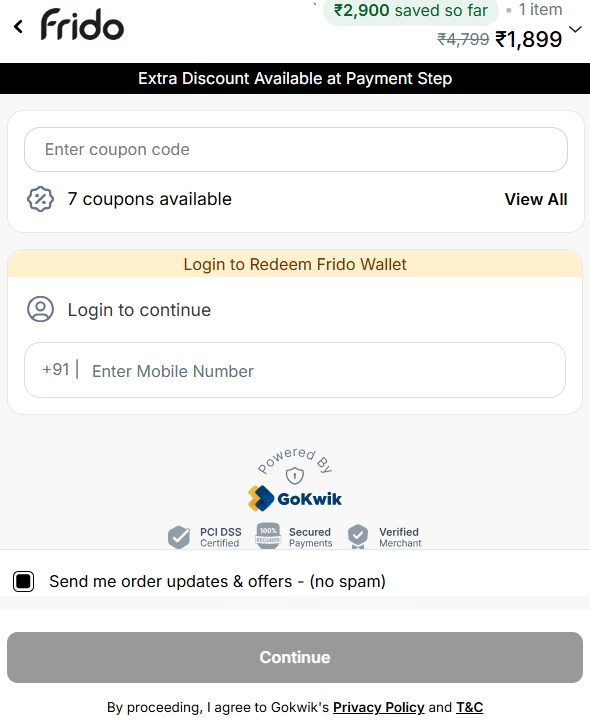
4. How Frido Uses Innovation, Marketing & Technology to Grow?
Frido’s marketing playbook mixes creativity with data. Campaigns like ‘Want Cuddles? Scan Here used real-world activations and QR codes to spark curiosity, drive traffic, and even go viral.
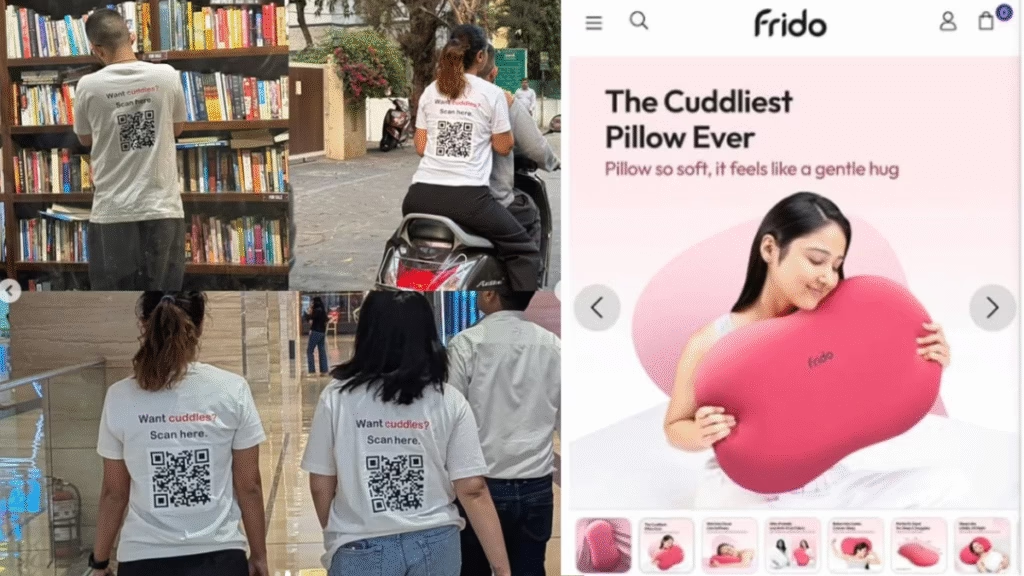
They invest heavily in awareness marketing, first identifying a core category like insoles and then expanding into related areas such as footwear. Their product roadmap reflects the same discipline, rolling out neck and back pillows, cushions, insoles, and now ergonomic footwear.
Every launch is guided by data—customer feedback, repeat purchase rates, and product satisfaction scores (reported at over 80%) feed into constant improvement.
On distribution, they run a wide media mix: Meta platforms like Instagram and Facebook, social content, influencer collaborations, experiential activations, and even OOH campaigns in public spaces. Together, this creates a balanced engine of awareness, engagement, and growth.
5. Putting Customers First: Frido’s Customer-Centric Approach
Frido stands out because it solves real pain points—whether it’s posture, back or neck pain, foot discomfort, or mobility challenges—rather than just offering ‘nice to have’ products. Every item is well thought out, made with quality materials, and backed by strong packaging and follow-ups on quality.
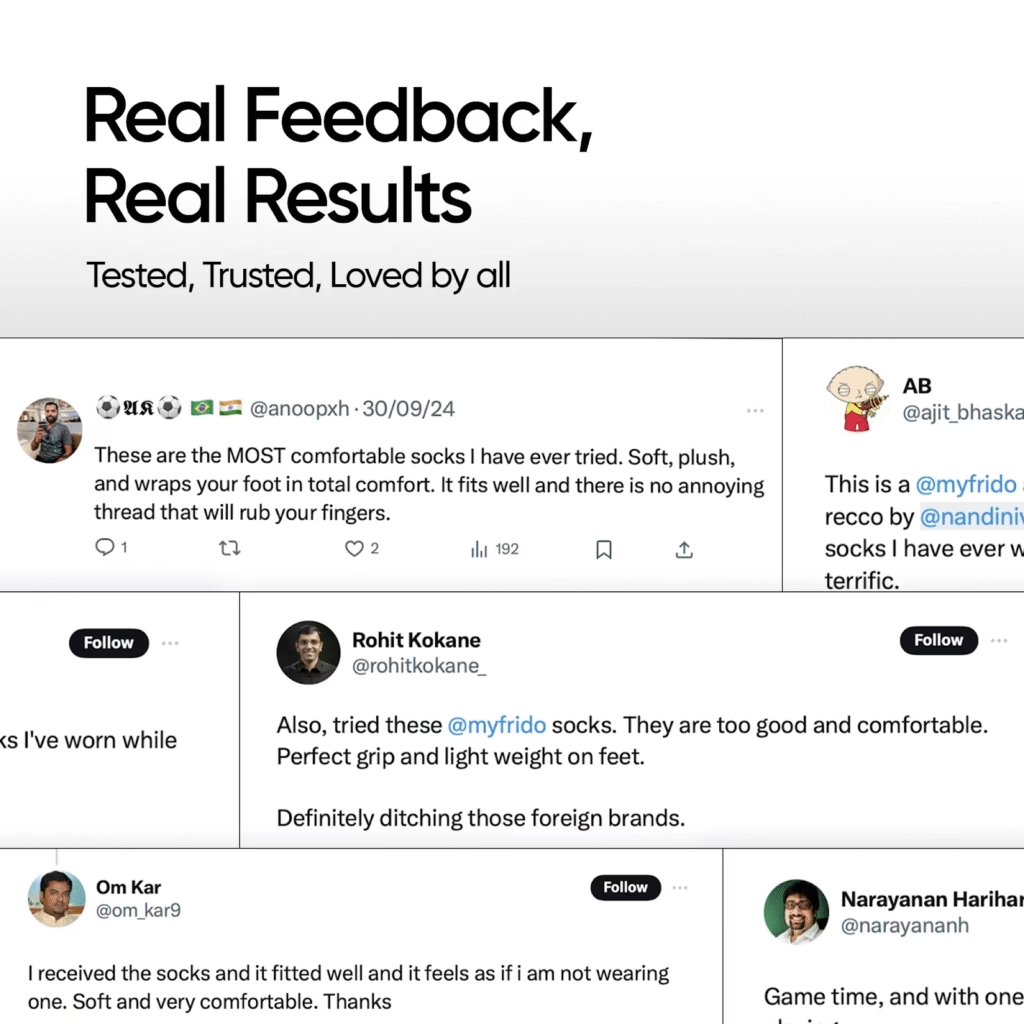
Their website supports customers through assisted chat help, clarifying doubts, and even nudging gently if carts are abandoned. Trust is built through transparent product features, authentic reviews, and engaging content. And with satisfied customers coming back for repeat purchases, word of mouth has become a powerful growth driver.
True growth in D2C comes from solving real discomforts—not just selling products. When design, storytelling, and customer experience work together, small brands can become powerhouses.
6. Conclusion
Frido isn’t just another wellness brand. It’s redefining how comfort, mobility, and ergonomic solutions meet real lives. From starting with a small capital, building a product set that’s lean but excellent, using creative marketing (storytelling, QR codes, experiential), optimizing their digital presence, to maintaining customer centricity—they are setting standards.
If you’re thinking of scaling a D2C / wellness / ergonomic brand, Frido’s journey offers many playbooks: how to launch products, how to distribute, how to market, how to optimize, how to create emotional connection.
If you’d like to discuss how we can help optimize your Omnichannel Marketing strategies, we’d be happy to set up a consultation call. Feel free to reach out to us at alibha@daiom.in.
For more informative content and blog, follow and stay tuned to DAiOM!
Subscribe to our NEWSLETTER!


